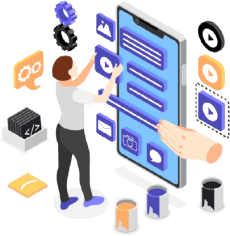



Creating an app can be really fun as a business venture to solve a problem, share a passion, or run an enterprise. The process often gets overwhelming when one begins designing an app for the first time. This post aims to simplify app design by breaking down each process that shall help you in developing applications that users love.
Begin designing your app and define the purpose. Know what exactly you want your application to be about. Define it- does it teach people money management skills, facilitate friendship linking, or do something like providing fun for the crowd? Its importance lies there.
The next consideration is who will be using your app. You can determine the best design choice based on who your target audience is. Consider the age group, interests, and use of your app by users. An app for young children is going to look vastly different from one made for a busy professional. Knowing your audience will help you develop a design that best meets their needs and desires.
With a clear purpose and audience in mind, it's time to plan the structure of your app. Begin by listing the key features you want to include. What are the essential functions that will deliver your app's value?
Now that you have your features map out how users are going to move through your app. Sketch out the major screens and how they connect. This makes sure that your app is easy to navigate and that users find what they are looking for without frustration. A well-thought-out structure of an app makes it more user-friendly and enjoyable to use.
Choosing the right tools is an important step in design. For beginners, user-friendly tools like Figma are a great option. Figma has a simple interface and lets multiple people work on a project at the same time, which is helpful for collaboration.
When choosing a design tool, consider what you need. Look for such features as drag-and-drop elements, templates, and the ease of sharing. A well-chosen tool can be very helpful in smoothing your way through the app design process.
The user interface is what people use to interact with your app, so it must be attractive and functional. Begin by choosing a color scheme that fits your app's purpose and appeals to your audience. Colors can affect how users feel about your app, so choose ones that match the experience you want to create. Next, focus on typography. Select easy-to-read fonts that fit your app's style. Using the same fonts throughout your app gives your app a very professional look.
Images and icons also contribute much to the look of your app. Use clear images that support content, doing it so they don't make your app unattractive. Good visuals can guide users and enhance their enjoyment of your app.
While the visual design is important, user experience makes sure that your app is easy and pleasant to use. Start by keeping navigation simple. Users should be able to move through your app without getting lost or confused.
Prioritize features that are really important and avoid cluttering the app with too many options. A clean, simple design attracts the attention of users to what matters most.
Gather feedback from potential users to determine what works and what does not. Testing your app on actual people can reveal issues you did not see and allow you to revise improvements that enhance usability.
Testing your prototype with users is very important. Observe how they will use your app, listen to what they say about it, and modify the design using this information. The cycle of testing and refining will be helpful to ensure that the final version of your app is well-designed and addresses the needs of its users.
Be able to communicate well with your development team. Reassure them of your design vision and other special requirements. This will help your team clear their questions or issues at each check-in, ensuring that the process, with respect to the development and the output from it, meets your design requirements.
The development of an app can be exciting! Begin by determining what the app will do and for whom. Then, contemplate its workings and the tools needed to be created. Make the app nice and easy to use. You can create a simplified version and test it for its workability.
Moreover, you can seek advice from those who know how apps are built. With some time and planning, you can develop an app that people will love. Enjoy the process, and you'll make a great app!